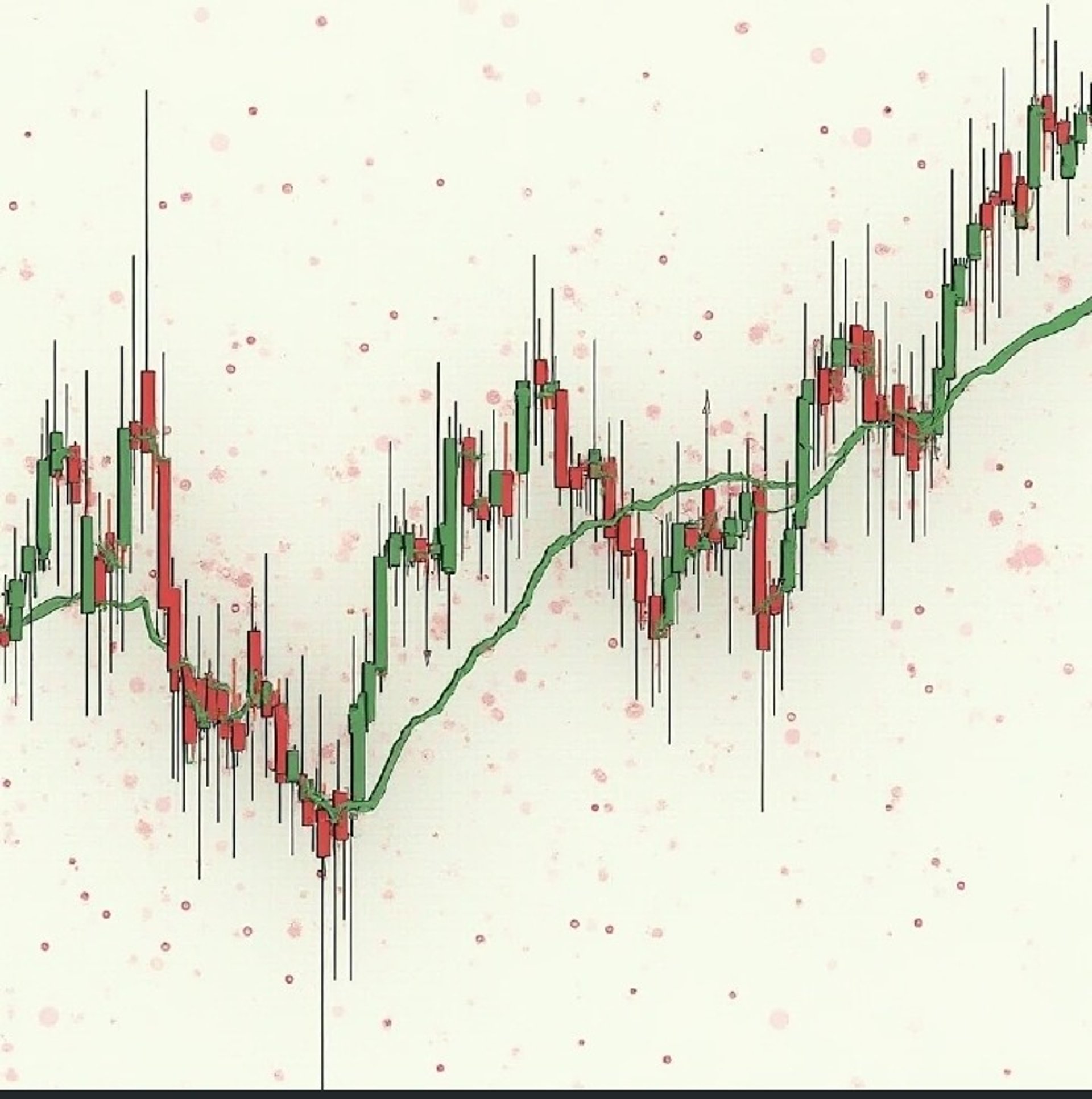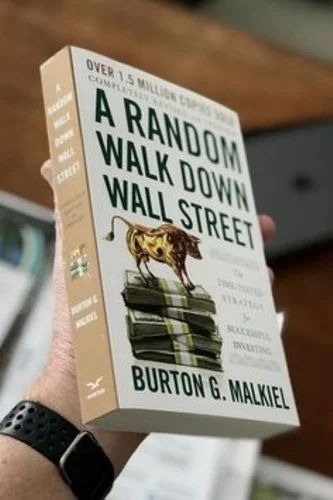
How the Theory of Physics Unravels the Secret of Stock Market - The Dance of Wall Street
Imagine the stock market as a vast, chaotic system, akin to the subatomic world governed by quantum mechanics. Just as particles exhibit wave-particle duality, stock prices fluctuate unpredictably, influenced by a myriad of factors. By applying quantum principles, investors can gain a deeper understanding of market behavior and make more informed decisions. Quantum mechanics introduces the concept of superposition, where particles can exist in multiple states simultaneously. Similarly, stock prices can exhibit multiple potential outcomes, each with a certain probability. By analyzing these probabilities, investors can identify potential opportunities and mitigate risks. By Dr Abush Ayalew
PERSONAL FINANCE
11/5/20249 min read

The Efficient Market Hypothesis:
A Quantum Challenge
One Up on Wall Street: Navigating the Unexpected with Lessons in Control
In July, Wall Street was eagerly awaiting the June inflation report, with consensus expectations set at 3.4%. Like most investors, I was optimistic. A lower-than-expected inflation rate would give the Federal Reserve room to cut interest rates—a move that would almost certainly provide a much-needed boost to the equity markets.
Then came the surprise. The report came in at 3.3%, just below expectations. It was the good news we'd hoped for, and based on forecasts, it should have sparked a rally. But instead of the market climbing, something truly baffling happened: the S&P 500, which was on track for a 1% gain, reversed and closed down more than 1.3%. Even more shocking was the Nasdaq 100, which fell by a staggering 2.7%—its largest one-day drop in recent memory.
Meanwhile, the Russell 2000, an index tracking small-cap stocks, bucked the trend and surged by 3%, as initially expected. Financial media scrambled to make sense of the move, with some analysts suggesting that money was flowing out of large-cap stocks and into small-cap stocks. However, as the market days that followed showed, this narrative didn’t quite hold up.
Adding to the mystery was the fact that, going into this report, there had been no strong signs of an economic recession. The economy had been holding steady, and most indicators were aligned with continued growth. The only blip on the radar was a one-time decline in the ISM Services Index—a vital indicator of the U.S. economy’s health. Yet, this single anomaly wasn’t enough to justify the sudden downturn across major indices.
After four years of trading experience, I thought I had seen it all—market rallies, unforeseen crashes, and everything in between. But this particular sequence of events was different. There was no clear news, no obvious catalyst, just a puzzling downward movement in big-name stocks that defied the usual market logic. It felt like the market was behaving irrationally, particularly in the short term.
Reflecting on that day, I came to an important realization: in the stock market, nothing is certain. We can’t control market movements, investor sentiment, or unexpected economic developments. But what we can control is our strategy, especially when it comes to risk management. In an unpredictable environment, staying grounded in sound practices like position sizing, diversification, and setting stop-loss orders is the one area where I can exercise true control.
So, while the July release of the June inflation report may have thrown Wall Street into confusion, it taught me a vital lesson. The market may be irrational, and we may never understand every twist and turn it takes, but amid that uncertainty, disciplined risk management remains my most reliable ally.
The efficient market hypothesis (EMH) posits that stock prices reflect all available information, making it impossible to consistently outperform the market. However, quantum mechanics challenges this notion. By recognizing the inherent uncertainty and probabilistic nature of market movements, investors can exploit inefficiencies and achieve superior returns.
Random Walk Theory and Quantum Mechanics
The random walk theory, popularized by Burton Malkiel in "A Random Walk Down Wall Street," suggests that stock price movements are random and unpredictable. This aligns with the quantum mechanical principle of uncertainty, where the precise behavior of particles cannot be determined with certainty. By embracing the randomness inherent in the market, investors can avoid the pitfalls of trying to predict future price movements.
Imagine a fruit fly in search of food. It makes short flights, scanning nearby, but sometimes it takes long, exploratory flights to new areas, hoping to find something more promising. This type of search behavior, known as a "Lévy Flight," is actually a random walk model, where the fly’s path is largely unpredictable yet highly efficient for survival. Now, consider a different kind of random walk—one that stock prices follow each day, impacted by new information and unexpected events.
In physics, random walks describe how particles of gas move or how heat spreads across a surface. The stock market behaves similarly, often described by economists as a "random walk," where price movements are largely unpredictable in the short term. Just as environmental studies use random walks to model pollutant spread through soil or water, the stock market’s fluctuations show how unpredictable forces influence our investments.
As Dr. Abush Ayalew, I invite you to explore these ideas further at my free webinar on Friday, November 8, at 7 p.m. EAT. We'll dive into principles from Burton Malkiel’s A Random Walk Down Wall Street, exploring how randomness, ecology, and market efficiency help us understand the market. Register now for access to exclusive content, including a summary of Malkiel’s insights and video highlights!
Part One: Stocks and Their Value—The Path of a Foraging Animal
Picture an animal foraging for food—like a fruit fly on a Lévy Flight. Short hops nearby let it cover familiar ground, while longer leaps help it find new, fruitful areas. Similarly, the stock market is constantly moving, sometimes making minor fluctuations and sometimes leaping dramatically with unexpected changes. Malkiel’s random walk theory reflects this idea, emphasizing that stock prices do not follow a predictable path but instead react to new information in real time, jumping in seemingly random directions.
Historically, investors have viewed stock prices as tied to a company’s "intrinsic value," calculated through fundamentals like earnings, assets, and industry prospects. But the random walk theory challenges this assumption. The theory holds that short-term movements in stock prices don’t necessarily reflect intrinsic value—rather, they’re a reaction to the ever-evolving flow of news, data, and sentiment.
Consider historic financial bubbles like Tulip Mania in the 1600s or the South Sea Bubble of the 1700s, where speculation and herd mentality drove prices to unsustainable heights. In these cases, stocks soared due to psychological factors—greed, fear, and the allure of easy profits. Much like a fruit fly’s long leap into the unknown, investors in these bubbles ventured beyond rationality, causing prices to detach from actual value.
Part Two: The Efficient Market Hypothesis—Is the Market Perfectly Efficient or Perfectly Random?
In physics, random walks are foundational to understanding how things like gas molecules disperse and how heat spreads in a solid. Albert Einstein used random walks to explain Brownian motion, which he then used to calculate the size of atoms. The stock market operates on similar principles, with the Efficient Market Hypothesis (EMH) suggesting that markets rapidly adjust to new information, just as heat instantly diffuses across a surface when the temperature changes.
The EMH proposes that all available information is immediately incorporated into stock prices, making it nearly impossible to consistently "beat the market" by predicting price movements. Imagine particles in a container—each time a particle bounces around, its position is random but collectively they obey certain laws of diffusion. In the same way, prices in an efficient market are affected by countless pieces of data, such as earnings reports, geopolitical events, and investor sentiment, with each "collision" of information moving prices unpredictably.
The EMH claims that stock prices follow a path that’s constantly updated with the latest information, and this efficiency leaves little room for investors to find “hidden” opportunities. This principle is why some investors opt for passive index funds, tracking broad markets rather than trying to “outsmart” them. By betting on the market as a whole rather than individual stocks, they aim to capture the natural upward drift of the market over time, much like a river moving inevitably downstream.
Critics of the EMH argue that if markets were truly efficient, anomalies like financial bubbles and crashes wouldn’t occur. They point to behavioral economics as evidence that human psychology—greed, fear, and other emotions—adds unpredictability. Much like a pollutant spreading unevenly through soil types, human biases cause inefficiencies, making the stock market behave erratically at times.
Part Three: How the Pros Play the Biggest Game in Town—Are Experts Just Following the Crowd?
Imagine trying to predict how a pollutant will spread in water flowing through different types of soil. The pollutant moves at different speeds, sometimes faster through sandy soil and slower through clay. This concept, known as a Random Walk in Random Environments (RWRE), parallels the task professional money managers face: navigating an unpredictable market that’s constantly impacted by changing economic “environments.”
Despite their expertise, many professional money managers fail to consistently outperform the market. High fees and trading costs, coupled with the difficulty of consistently predicting price movements, make it a challenging task. In his book, Malkiel points to evidence that actively managed mutual funds often underperform passive index funds due to these factors.
Much like environmental studies use RWRE to track how pollutants spread, money managers try to “map” an unpredictable market, hoping to exploit opportunities before others do. Yet just as RWRE models show pollutants dispersing in unpredictable ways, markets move in unexpected directions, often rendering complex strategies ineffective. As Malkiel argues, the best approach may often be a low-cost, long-term strategy like index investing.
Part Four: The Do-It-Yourself Investor—Harnessing the Power of Passivity and Diversification
Given the unpredictable nature of markets, Malkiel encourages individual investors to take a passive approach. Rather than constantly buying and selling based on the latest market swings, he suggests investing in low-cost index funds that track broader market performance. This strategy aligns with a "set-it-and-forget-it" philosophy, where investors let the market work for them over the long term, capturing its natural growth.
In ecological terms, this is like an animal choosing a habitat rich in diverse food sources rather than expending energy foraging aggressively. By diversifying across a variety of assets, like stocks, bonds, and even real estate, investors reduce the risk that a downturn in any one sector will deplete their portfolio.
Diversification acts as a buffer against market randomness. By spreading investments across sectors and regions, an investor can navigate the market’s unpredictability more safely. In fact, Malkiel suggests that international diversification can reduce risk, much like how a pollutant spreads less aggressively in heterogeneous soil types than in a uniform medium.
Part Five: The Life-Cycle Approach to Investing—Adapting to Changing Environments
Malkiel’s life-cycle approach to investing recognizes that investment strategies should change as people age. Just as the environmental factors impacting a species’ survival change over time, investors’ financial needs shift with life stages. Early in life, investors should take higher risks, similar to a young animal exploring different habitats, seeking opportunities for growth.
For young investors, stocks provide the potential for wealth accumulation, compounding over time. As investors near retirement, however, they should reduce risk, focusing more on stable income-producing assets. This gradual shift is akin to an animal becoming more cautious as it matures, focusing on sustaining resources rather than high-risk exploration.
Part Six: The Future of Investing—Navigating Technological Advances and Global Markets
In his closing section, Malkiel discusses how technology reshapes investing. Digital trading platforms and robo-advisors give individuals the tools to manage portfolios independently. However, this accessibility can tempt investors into over-trading—akin to a foraging animal wandering without a plan, burning resources.
Malkiel also highlights the importance of international diversification. Just as pollutants spread unevenly in varied environments, different economies offer distinct growth potentials and risks. By investing globally, investors can capitalize on emerging market opportunities while mitigating risk.
The overarching message? Stick to a long-term strategy, avoid emotional decisions, and embrace the inherent randomness of markets. As with a foraging animal’s random search pattern or a particle diffusing through a medium, taking calculated risks and staying diversified is often the smartest path to sustainable returns.
Call to Action: Join Our Free Webinar to Master the Market’s Random Dance!
Ready to understand how to navigate the unpredictable nature of the market? Join me, Dr. Abush Ayalew, on Friday, November 8, at 7 p.m. EAT for a free webinar on these essential principles. Together, we’ll explore Malkiel’s insights on investing, randomness, and efficient market strategies. Register today to receive a free video summary and actionable takeaways from the session!
Conclusion: Embrace Randomness with a Disciplined Plan
The stock market may seem as unpredictable as particles in a container or a pollutant spreading through soil, yet disciplined, diversified investing can help you harness this randomness. The random walk theory, the efficient market hypothesis, and Malkiel’s strategies emphasize that while short-term predictions are futile, long-term, passive investing offers reliable returns.
By following a well-balanced strategy, you won’t need to predict every twist and turn—just stay the course, stay diversified, and let the market’s natural tendencies work in your favor.
Disclaimer
This article is for informational purposes only and does not constitute financial advice. Please consult a certified financial advisor for personalized guidance.
About the Author:
Dr. Abush Ayalew, MD/MBA, is an author and seasoned investor focused on value and passive investing strategies. He empowers readers with insights that blend ecological, physical, and economic principles, fostering a holistic understanding of market dynamics.


Join Us on Our Webinar : for an insightful journey into one of the most celebrated finance books!
Date: Nov 08/2024 on 7:00 PM EAT, Friday Evening
Platform: Google Meet With This Link : https://meet.google.com/wik-sxrx-vkj




